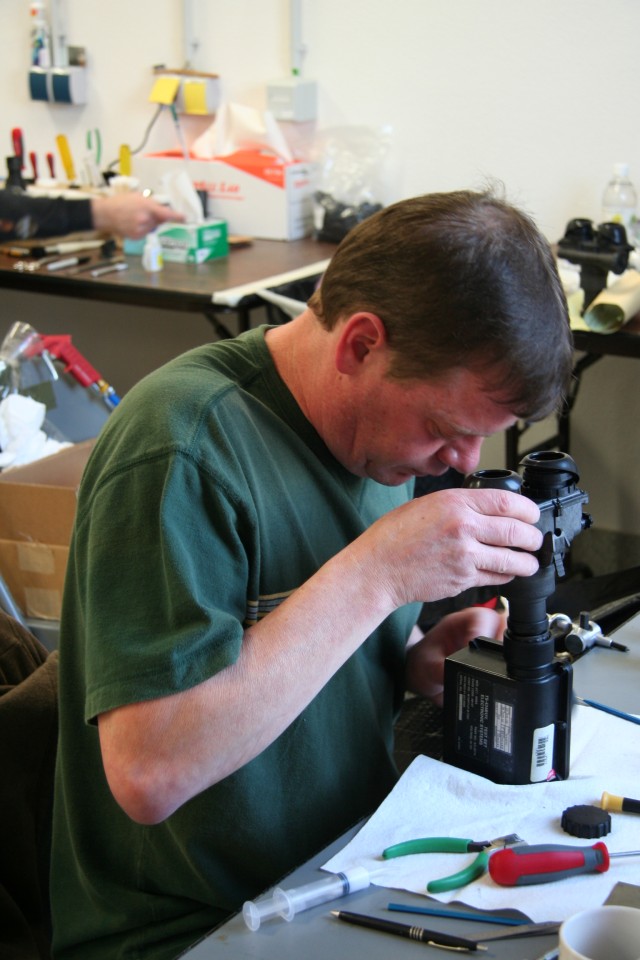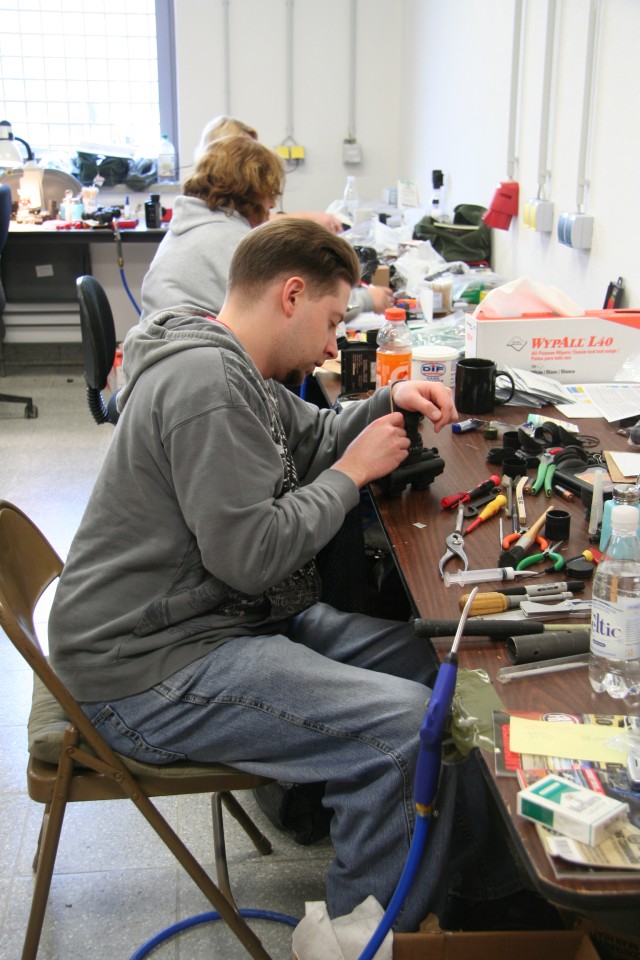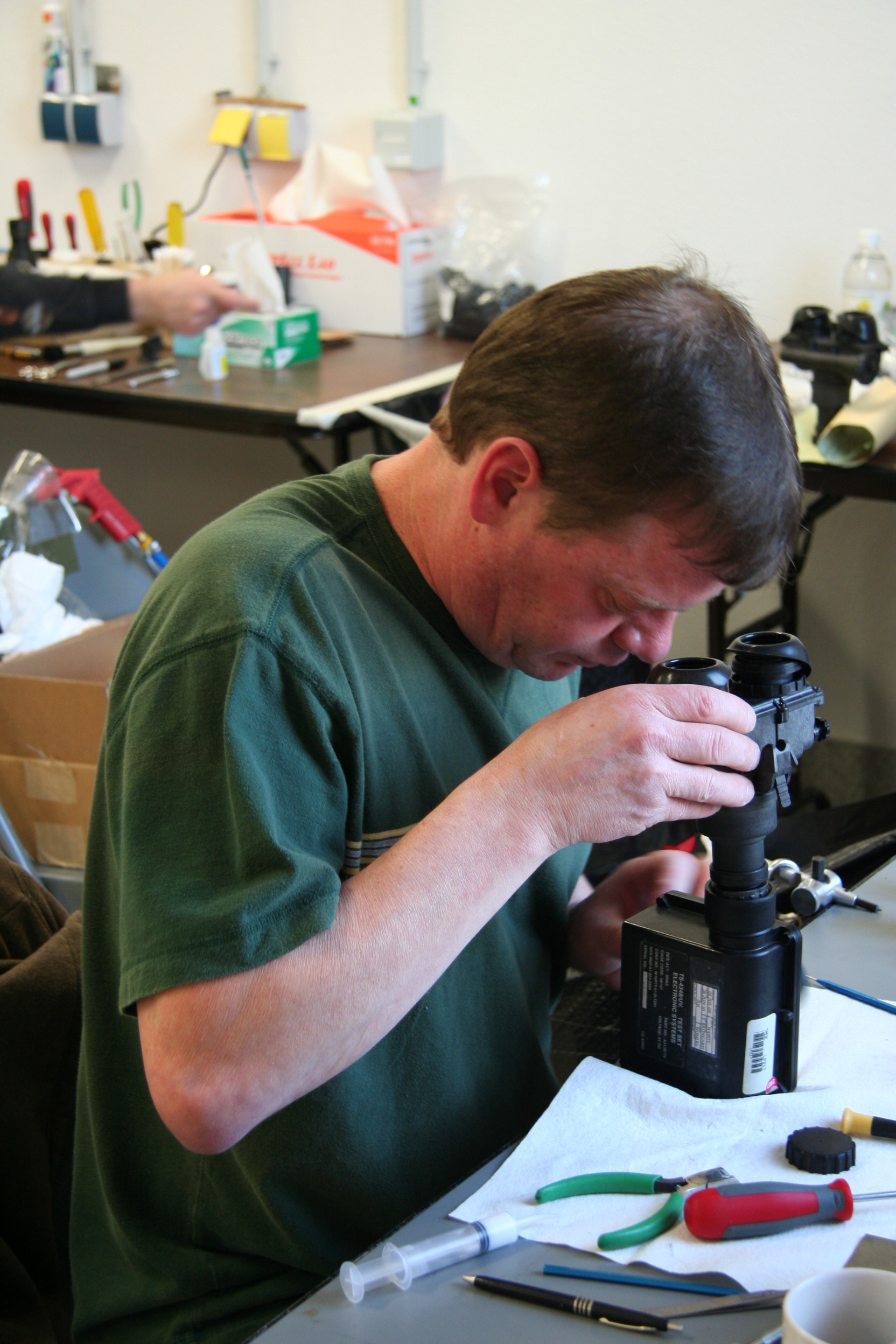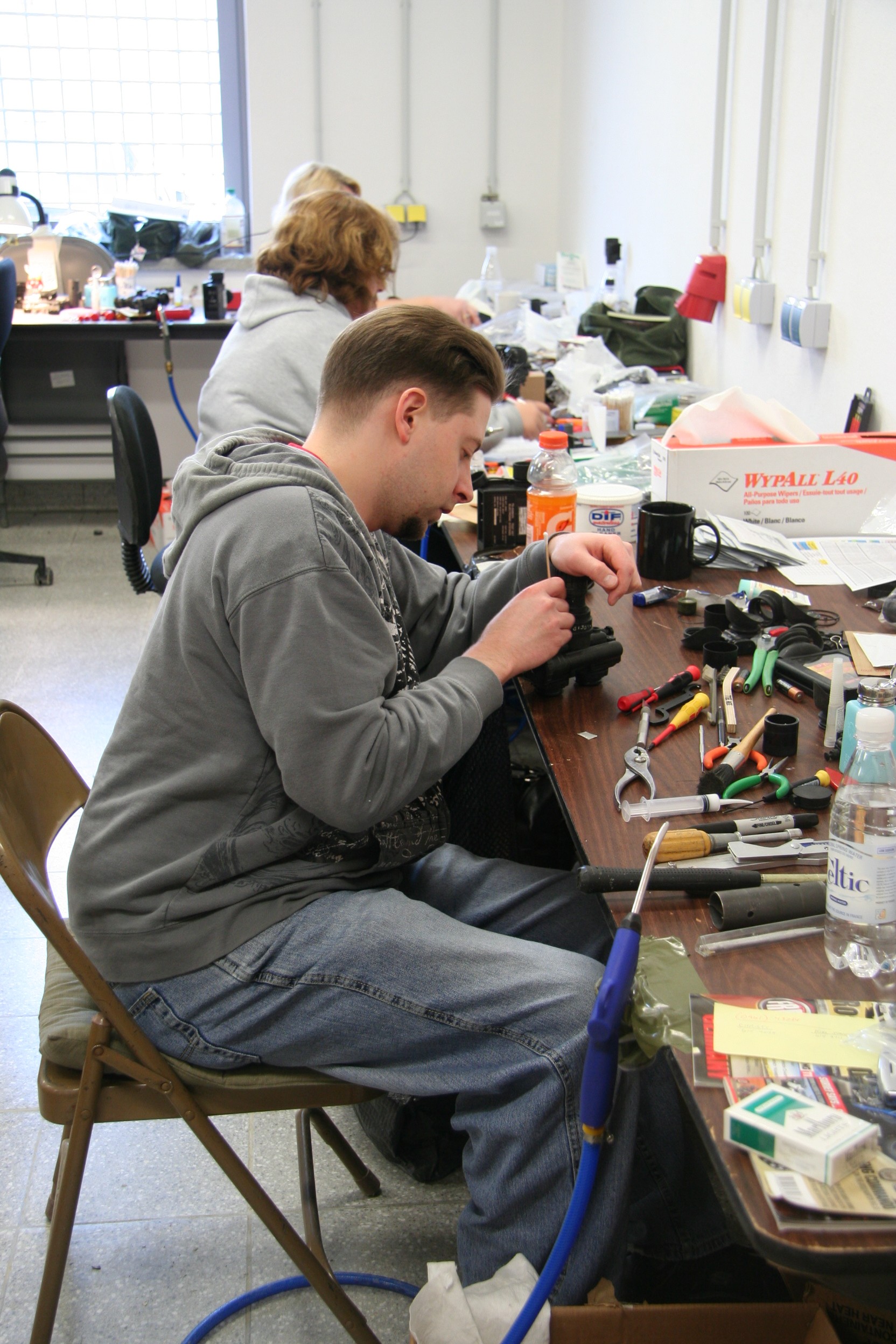GRAFENWOEHER, Germany - A Communications Electronics Evaluation Repair Team completed the reset of more than 2,000 night vision devices for the 172nd Infantry Brigade Combat Team last month. The CEER-T is a field-level operation under the command and control of the CECOM Life Cycle Management Command (formerly the U.S. Army Communications and Electronics Command).
"The CEER-T teams give us a tremendous advantage in assisting units with their reset operations because the teams have the ability to deploy anywhere in the world and conduct reset operations onsite," said Barron Williams, the senior command representative for the CECOM LCMC in Europe. "Their capability helps streamline the process for the units and enables the Soldiers to get their equipment back faster."
The reset process begins when the unit inducts its equipment into the reset program.
"Once we receive the equipment from the unit, the technicians begin repairs immediately so that there is no loss of productive time," explained William "Bill" Soto, the CEER-T site lead and mission coordinator for the operation at Grafenwoeher. "We have a team of people working on multiple pieces of equipment at the same time to reduce the amount of time the unit is without its equipment."
During the reset operation at Grafenwoeher, the CEER-T reset 2,034 NVDs for the 172nd IBCT. Each NVG underwent a number of steps to ensure the equipment was returned to the unit in the best possible condition. The reset of NVGs begins with a visual inspection to identify physical damage or parts needing repair and operational testing to determine if the equipment needs internal repairs or disassembly. Once the inspection and testing is complete, needed parts are replaced and the items are re-tested. Finally, all actions are annotated on a work order and the item is ready for return to the unit.
"The significance of our mission at Grafenwoeher is that we had a lot of NVDs to repair and reset," Soto said. "We managed to complete all of the equipment maintenance in one month, so the Soldiers were able to get their equipment back in a matter of weeks."
The U.S. Army CECOM Life Cycle Management Command is headquartered at Fort Monmouth, N.J. Its mission is to research, develop, acquire, field and sustain communications, command, control, computer, intelligence, electronic warfare and sensors capabilities for the U.S. Army.




Social Sharing